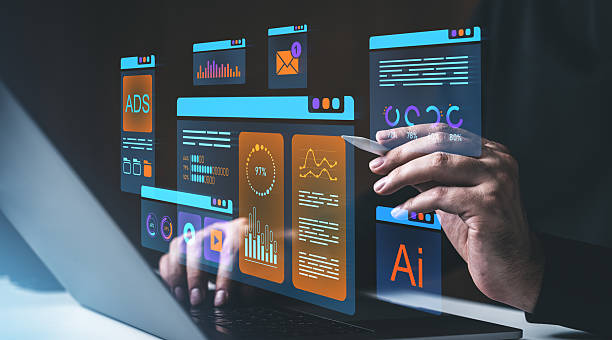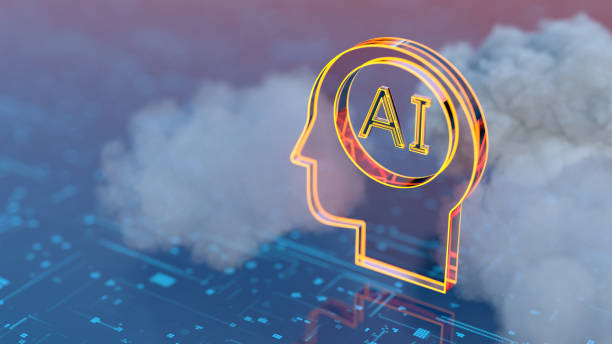What is an Artificial Intelligence Robot: A Comprehensive Definition
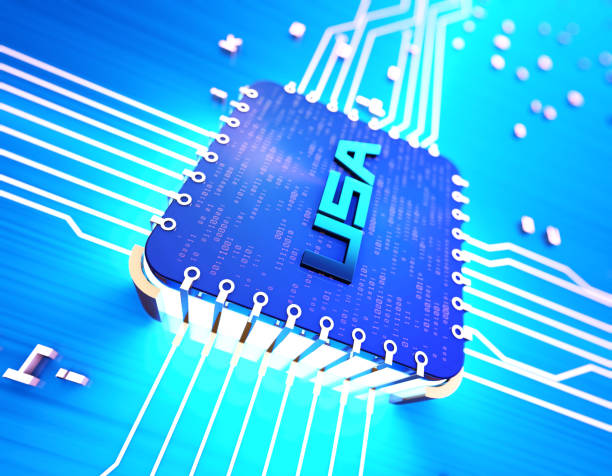
What is an Artificial Intelligence Robot: A Comprehensive Definition
#An Artificial Intelligence Robot (AI Robot) is a combination of two key concepts: robotics and artificial intelligence.
In other words, an intelligent robot is a physical machine that, using AI algorithms and techniques, is capable of performing tasks that usually require human intelligence.
These tasks can include learning, problem-solving, decision-making, pattern recognition, and interacting with the environment.
AI robots are used in various fields such as industry, medicine, customer service, and even entertainment.
One of the prominent features of an AI robot is its ability to adapt to new conditions and improve its performance over time.
Artificial intelligence enables robots to learn from their experiences and perform better in subsequent decisions.
AI-powered robots typically use sensors to collect information from their environment.
This information is then processed by AI algorithms to help the robot gain a proper understanding of the current situation and take appropriate actions.
For example, an AI robot working in a manufacturing plant might use cameras and other sensors to monitor the production line, identify potential problems, and perform necessary repairs.
This robot can automatically adjust machine settings, identify and replace faulty parts, and even predict when preventive maintenance is needed.
Ultimately, the AI robot represents a major step in technological evolution and has the potential to fundamentally change many aspects of our lives.
With the accelerating advancements in AI and robotics techniques, it can be expected that intelligent robots will play an increasingly important role in the future.
Does your current website showcase your brand’s credibility as it should? Or does it drive potential customers away?
Rasaweb, with years of experience in designing professional corporate websites, is your comprehensive solution.
✅ A modern, beautiful website tailored to your brand identity
✅ Significant increase in lead and new customer acquisition
⚡ Contact Rasaweb now for a free consultation on corporate website design!
Main Components of an Intelligent Robot: Hardware and Software Review
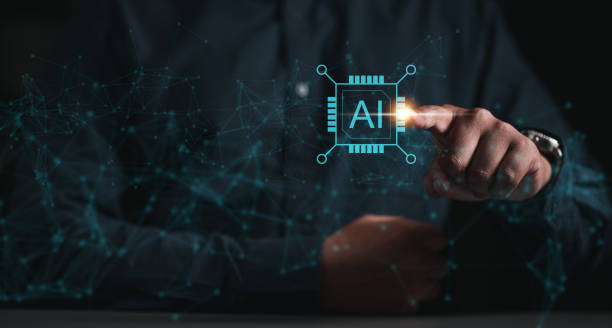
Main Components of an Intelligent Robot: Hardware and Software Review
An intelligent robot consists of two main parts: hardware and software.
Hardware includes the physical components of the robot such as the body, motors, sensors, and power supply.
Software includes AI algorithms, the operating system, and application programs that allow the robot to perform its tasks.
Sensors play a vital role in the performance of an AI robot.
They collect information about the surrounding environment and transmit it to the robot.
There are various types of sensors, each designed to collect a specific type of information.
For instance, cameras capture images, microphones receive sounds, and tactile sensors record physical contact information.
This information is processed by the robot’s software and used for decision-making and taking appropriate actions.
Robotics
The AI robot’s software includes various algorithms that enable the robot to learn, reason, and make decisions.
These algorithms can include neural networks, machine learning algorithms, and inference systems.
Neural networks are used to recognize patterns and learn from data.
Machine learning algorithms allow the robot to improve its performance over time by using its experiences.
Inference systems enable the robot to reason using existing knowledge and arrive at new conclusions.
Ultimately, the interaction between hardware and software is essential for the proper functioning of an AI robot.
Hardware collects information, and software processes this information and sends necessary commands to the hardware.
This cycle continuously repeats so that the robot can effectively interact with its environment and perform its tasks.
AI Robot
Diverse Applications of AI Robots from Industry to Medicine

Diverse Applications of AI Robots from Industry to Medicine
AI robots have applications in various fields.
In industry, robots are used for automating production processes, performing dangerous and repetitive tasks, and improving product quality.
In medicine, robots are used for performing precise surgeries, providing care services to patients, and assisting people with disabilities.
AI Robot
In the manufacturing sector, AI-powered robots can perform various tasks, including assembling parts, quality inspection, product packaging, and material handling.
These robots can work continuously without fatigue, leading to increased productivity and reduced costs.
Additionally, intelligent robots can operate in hazardous environments such as chemical and nuclear plants, preventing harm to human workers.
In the medical field, AI robots can assist doctors in performing complex and precise surgeries.
These robots can plan surgical paths using medical images and guide surgical instruments with high accuracy.
Furthermore, intelligent robots can help patients with rehabilitation exercises and provide in-home care services.
AI Robot
| Field | Application |
|---|---|
| Industry | Automation of production processes, quality inspection |
| Medicine | Precise surgeries, patient care |
| Services | Customer support, financial services |
Moreover, intelligent robots also have extensive applications in the service sector.
They can answer customer queries in call centers, provide financial services, and even work as personal assistants in homes and offices.
AI Robot
Pros and Cons of Using AI Robots: A Realistic Look

Pros and Cons of Using AI Robots: A Realistic Look
The use of AI robots has numerous advantages and disadvantages.
Advantages include increased productivity, reduced costs, performing dangerous tasks, and providing better services.
Disadvantages include job displacement, security concerns, and ethical issues.
AI Robot
One of the biggest advantages of using intelligent robots is increased productivity and reduced costs.
Robots can work continuously without fatigue, leading to increased production and reduced labor costs.
Additionally, robots can perform tasks that are dangerous or difficult for humans, such as working in contaminated environments or carrying heavy loads.
This can help improve employee safety and health.
However, the use of intelligent robots also has disadvantages.
One of the biggest concerns is job displacement due to automation.
By replacing humans with robots, many individuals may lose their jobs.
This can lead to increased unemployment and economic inequality.
Automation
Security issues are another concern related to the use of intelligent robots.
If robots are not properly designed and protected, they may be hacked or misused.
This can lead to privacy breaches, data theft, and even physical harm.
AI Robot
Finally, ethical issues must also be considered.
With the accelerating advancement of technology, new questions arise regarding accountability, privacy, and discrimination.
For example, if an intelligent robot makes a decision that leads to harm, who will be responsible? How can the misuse of robots be prevented? These questions require thorough discussion and examination.
Do visitors abandon your e-commerce site before making a purchase? Worry no more! With Rasaweb’s professional e-commerce website design services, solve the problem of converting visitors into customers forever!
✅ Significant increase in conversion rates and sales
✅ Unparalleled and engaging user experience
⚡ Contact us now for a free consultation!
The Future of AI Robots: Predictions and Key Trends
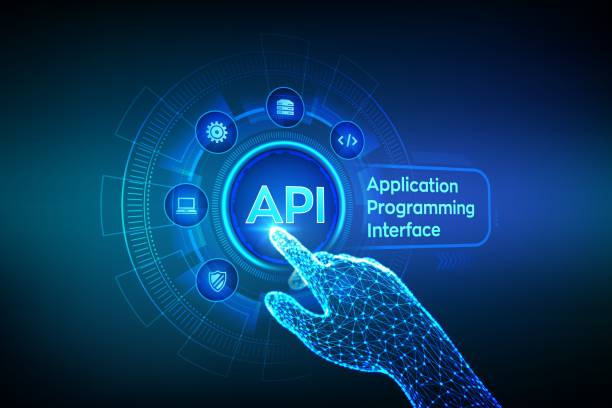
The Future of AI Robots: Predictions and Key Trends
The future of AI robots looks very bright.
With the accelerating advancement of technology, robots will be able to perform more complex tasks and have applications in more fields.
One of the key trends is the development of autonomous robots that can operate without human intervention.
These robots can be used in areas such as agriculture, transportation, and space exploration.
AI Robot
Another important trend is the development of collaborative robots (Cobots) that can work alongside humans.
These robots are designed to assist humans in performing difficult or repetitive tasks.
Cobots can be used in production lines, hospitals, and offices.
AI Robot
Furthermore, AI robots are expected to play a more significant role in customer service.
Chatbots and virtual assistants can answer customer questions, resolve their issues, and provide support services.
This can help improve customer satisfaction and reduce operational costs.
However, the development of AI robots also brings challenges.
One of the biggest challenges is the development of stronger and more reliable AI algorithms.
Current algorithms still make errors in some cases and cannot fully replace humans.
AI Robot
Another challenge is ensuring the safety and security of robots.
Robots must be designed to prevent harm to humans and the environment.
Also, robots must be protected against hacking and misuse.
Ethical Challenges in Intelligent Robot Development: Accountability and Privacy
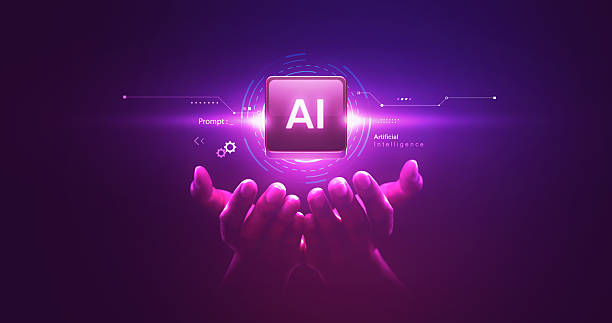
Ethical Challenges in Intelligent Robot Development: Accountability and Privacy
The development of AI robots brings numerous ethical challenges.
One of the most important of these challenges is the issue of accountability.
If an intelligent robot makes a decision that leads to harm, who will be responsible? Should the robot’s manufacturer, the robot’s user, or the robot itself be held accountable? AI Robot
The issue of privacy is another important challenge.
Robots typically collect a lot of information about their surroundings and the people they interact with.
This information can include images, sounds, and personal data.
How can this information be protected and its misuse prevented?
Another ethical issue is discrimination.
If AI algorithms are trained on inaccurate or biased data, they may make discriminatory decisions.
For example, a hiring algorithm might unintentionally reject female or minority applicants.
AI Robot
To address these ethical challenges, it is necessary to establish appropriate laws and regulations.
These laws should consider accountability, privacy, and discrimination.
Additionally, education and awareness regarding ethical issues related to AI robots must be increased.
AI Robots in Iran: Opportunities and Challenges
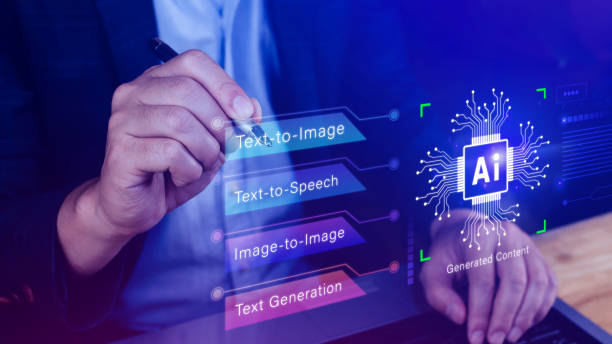
AI Robots in Iran: Opportunities and Challenges
The development of AI robots in Iran has its own specific opportunities and challenges.
Iran possesses a skilled and talented workforce in engineering and computer science fields that can play a significant role in the development of this technology.
Furthermore, Iran has its unique needs in various sectors such as industry, agriculture, and medicine, which can pave the way for the development of specialized AI robots.
AI Robot
However, the development of AI robots in Iran also faces challenges.
One of the biggest challenges is the lack of investment and necessary infrastructure.
To develop this technology, significant investments are required in research and development, education, and manufacturing.
AI Robot
| Opportunities | Challenges |
|---|---|
| Skilled workforce | Lack of investment |
| Specific domestic needs | Lack of infrastructure |
| Export potential | Technological limitations |
Another challenge is technological limitations and access to technical know-how.
Iran lags behind advanced countries in some technological areas and needs greater effort to compensate for this lag.
AI Robot
Despite these challenges, Iran has high potential for the development of AI robots.
With appropriate investment and meticulous planning, Iran can become a leading country in this field.
Machine Learning and its Role in Robot Intelligence
![]()
Machine Learning and its Role in Robot Intelligence
Machine Learning is an important subfield of artificial intelligence that plays a key role in making robots intelligent.
Machine learning allows robots to learn from data and improve their performance without explicit programming.
This is especially important in complex and unpredictable environments where precise programming is impossible.
AI Robot
There are different types of machine learning algorithms, each suitable for a specific type of task.
Supervised Learning algorithms use labeled data to train the robot.
Unsupervised Learning algorithms use unlabeled data to discover patterns and structures.
Reinforcement Learning algorithms allow robots to learn through interaction with the environment and receiving rewards and penalties.
Machine Learning
Using machine learning algorithms, robots can perform various tasks, including facial recognition, voice recognition, object detection, and navigation.
For example, an intelligent robot working in a warehouse can use machine learning to learn the location of various objects and find optimal routes for their transportation.
AI Robot
Machine learning allows robots to improve their performance over time and through their experiences.
This is especially important in dynamic and changing environments where robots must constantly adapt to new conditions.
AI Robot
Do visitors abandon your e-commerce site before making a purchase? Worry no more! With Rasaweb’s professional e-commerce website design services, solve the problem of converting visitors into customers forever!
✅ Significant increase in conversion rates and sales
✅ Unparalleled and engaging user experience
⚡ Contact us now for a free consultation!
Security of Intelligent Robots: Threats and Countermeasures

Security of Intelligent Robots: Threats and Countermeasures
The security of intelligent robots is one of the important issues that must be considered in the development and use of this technology.
Robots are usually connected to computer networks and can be subjected to cyber attacks.
If a robot is hacked, its control might be seized by malicious individuals and used for illegal activities.
AI Robot
Numerous security threats exist for intelligent robots.
One of the most common threats is malware attacks.
Malware can infiltrate the robot’s operating system and take control of it.
Another threat is Denial-of-Service (DoS) attacks, which cause the robot to malfunction.
AI Robot
Furthermore, robots may be subjected to physical attacks.
Malicious individuals can damage the robot, tamper with its sensors, or steal its data.
To counter these threats, appropriate security measures must be adopted.
One of the most important security measures is the use of strong encryption to protect the robot’s data.
Sensitive information must be encrypted in such a way that even if the robot is hacked, the data remains unreadable.
Additionally, the robot’s operating system must be regularly updated to address security vulnerabilities.
AI Robot
Moreover, the robot must be protected against physical attacks.
The robot should be kept in a secure environment, and access to it should be restricted.
Also, the robot’s sensors must be protected against tampering.
Skills Required for Working with AI Robots: Training and Development

Skills Required for Working with AI Robots: Training and Development
Working with AI robots requires a set of technical and non-technical skills.
Technical skills include programming, robotics, artificial intelligence, and machine learning.
Non-technical skills include problem-solving, critical thinking, and communication.
AI Robot
To work with intelligent robots, it is necessary to be familiar with various programming languages.
Programming languages such as Python, C++, and Java are commonly used for robot programming.
Additionally, it is necessary to be familiar with robotics concepts such as kinematics, dynamics, and control.
Robotics Courses
Familiarity with AI and machine learning concepts is also essential for working with intelligent robots.
It is necessary to be familiar with various machine learning algorithms, neural networks, and inference systems.
Furthermore, it is necessary to possess strong problem-solving, critical thinking, and communication skills.
AI Robot
To develop the skills required for working with intelligent robots, you can participate in various training courses, study relevant books and articles, and undertake practical projects.
Additionally, you can connect with experts in this field and learn from their experiences.
With effort and perseverance, you can acquire the necessary skills for working with intelligent robots and achieve success in this domain.
AI Robot
Frequently Asked Questions
| Question | Answer |
|---|---|
| What is an Artificial Intelligence Robot? | It is a robot that uses artificial intelligence capabilities to understand its environment, reason, learn, and make decisions to perform complex tasks autonomously. |
| What is the main difference between a regular robot and an AI robot? | AI robots can learn and adapt to their environment, while regular robots usually operate based on fixed and pre-programmed instructions. |
| In what areas are AI robots used? | In fields such as industry (production lines), medicine (robotic surgeries), services (customer support, smart vacuum cleaners), exploration (space and underwater), and entertainment. |
| How do AI robots learn? | They acquire new skills by analyzing large datasets and identifying patterns through Machine Learning and Deep Learning algorithms. |
| Can AI robots have emotions? | Currently, no. They can recognize or simulate emotions, but they do not experience real emotions like humans. |
| What are the most important advantages of using AI robots? | Increased productivity, reduced human error, performing dangerous or repetitive tasks, and providing innovative and efficient services. |
| What challenges exist in the development of AI robots? | Need for abundant and high-quality data, complexity of algorithms, ethical issues, cybersecurity, and high research and development costs. |
| Are AI robots dangerous to humans? | With adherence to safe design principles and ethical regulations, no. Concerns are primarily related to social and economic impacts such as changes in the job market. |
| What is an example of an AI robot in daily life? | Smart vacuum cleaner robots (like Roomba) that autonomously map and clean homes, or intelligent voice assistants (like Siri and Alexa). |
| How is the future of AI robots predicted? | They are expected to become smarter, more autonomous, and capable of more complex interactions with humans, playing a more prominent role in industry, medicine, transportation, and daily life. |
And other advertising agency services by Rasaweb in the field of advertising
- Smart Advertising Campaign: A dedicated service for growth in campaign management based on marketing automation.
- Smart UI/UX: Professional optimization for digital branding using key page optimization.
- Smart Marketing Automation: Designed for businesses seeking user engagement through intelligent data analysis.
- Smart Marketing Automation: A professional solution for increasing website traffic with a focus on customizing user experience.
- Smart Advertorial: An effective tool for digital branding by optimizing key pages.
And over hundreds of other services in the field of internet advertising, advertising consultation, and organizational solutions
Internet Advertising | Advertising Strategy | Advertorial
Resources
Everything About AI Robots
Complete Guide to Robotics and Artificial Intelligence
The Future of Intelligent Robots in Iran
Applications of Intelligent Robots in Industry
? Are you ready to transform your business in the digital world? Rasaweb Afarin Digital Marketing Agency, with expertise in providing comprehensive digital solutions, from corporate website design to SEO optimization and social media management, is ready to assist you on your path to growth and achieving your goals. With us, establish a powerful and influential presence in the online space.
📍 Tehran, Mirdamad Street, next to Bank Markazi, Southern Kazeroun Alley, Ramin Alley, No. 6

